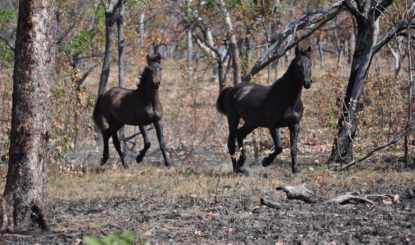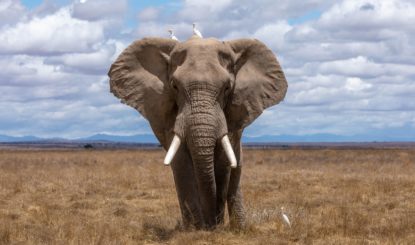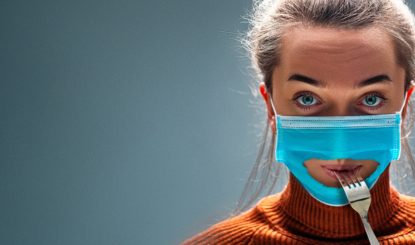When the Rainy Season Begins on Bonrook
For many months, the Australian state Northern Territory was closed to visitors from Sydney and other areas of Australia due to the Corona crisis. As soon as it was announced that the borders to the state in the north of the country would open again, I organised my trip to Bonrook.
40 degrees, sweltering heat, no wind. The sun is burning onto the Australian red soil. It is October and thus the end of the dry season on the Franz Weber Territory. Compared to my last visit here in February, everything looks very different now: the grass has browned, rivers and creeks are empty, the earth is rough and cracked. “We only had a very short rain three weeks ago. This time, we can drive much further into the 500 km2 (18 km by 28 km) area as everything is dry,” says Bonrook Station Manager Sam Forwood, who has been looking after the Franz Weber Territory since June 1996 (soon to be 25 years!).
We are driving into the dry bush in the original Franz Weber Territory 4WD Toyota Land Cruiser. 30 years ago, Fondation Franz Weber (FFW) bought this car new in Darwin. Today, the old off-roader has neither doors nor glass windows, but its second manual gearbox and its third engine. It still runs perfectly, laughs Sam Forwood: “Nothing gets thrown away on Bonrook that I can’t somehow fix.”
Our first stop is the nearby water station, where water is mechanically pumped out of the ground during the dry season to provide the brumbies with water all year round. By the station, we place new salt stones to provide the Australian wild horses with enough vitamins and minerals during the hot dry season. We continue driving in the Toyota over dusty stone and dirt roads and dried up riverbeds. Suddenly, we see all kinds of animals! We have arrived at a natural, full billabong. There are several mobs of brumbies, wild cows, jabirus (a stork-like bird), galahs, Australian white ibis, water buffaloes with egrets on their backs and black cockatoos. It is a wonderful motley gathering!
Countless mobs with foals
We drive deeper into the Franz Weber Territory. It is unbelievable: every few hundred metres we discover a new herd of brumbies! The coat of the graceful animals is shiny, their mane thick and dense. Although it is the end of the dry season and there has been less food in the last months, they are well-fed. The stallions run around snorting wildly, signalling they are the boss and protecting their mob. We can approach them to about 30 metres of them before they run away. In almost every herd there are at least one or two cute little foals jumping around. All are estimated to be between two days and two weeks old. Getting a good photo of them is not so easy though, as their mothers always shield them protectively. Sam explains, “Here, most foals are born in October, just before the rainy season starts, when there will be soon plenty of fresh green grass again.” So many foals is a clear sign that the brumbies on Bonrook are doing very well. They are fit, healthy and lively.
Fascinating nature
As we continue, I notice trees that look like someone had been shot in front of them: bright red, thick mass hangs from the tree trunks and sticks to the ground. “No need to worry!” calls Sam. “It’s just resin that oozes out of the tree trunk in large quantities at the end of the dry season.” The tree in question is a type of eucalyptus tree in the Bloodwood family, the Eucalyptus latifolia. After the cooler, very dry months, the temperatures and humidity have risen sharply, causing this event. It truly looks creepy!
A little later, I discover small purple flowers blossoming out of grey, dry dirt ground. Sam explains: “Three weeks ago we had a very short, light shower of rain. These are Brunoniella australis, also called blue trumpet, which bloom beautifully after the very first downpour of the season here in subtropical Australia.”
There it is again! On the drive back to the homestead, I see the adorable nest of my favourite bird, the grey bowerbird. This clever little fellow has decorated his highly impressive nest with snail shells, green glass fragments, as well as bones and horse poo to attract a female.
In the evening, we experience a proper thunderstorm; downpour of rain, thunder and lightning. It is the first real rain after the dry season. The next morning, we are going out again to check on the brumbies. This time, however, we take the quads out in order to not get stuck in the mud after the heavy rain.
I am astonished how green it has become overnight! Just one heavy rain made the grass sprout and grow up to two centimetres. This natural phenomenon – the exceedingly fast growth of grass – is caused by the high nitrogen content in the rain. It is caused by the enormous heat and pressure of the lightning in the atmosphere.
The rainy season has begun and soon the Franz Weber Territory will be as lush and green as it was in February, when I was here last time.
A Little Review of Pine Creek’s History
The 500-square-kilometre Franz Weber Territory borders the sleepy town of Pine Creek, a 2.5-hour drive south of Darwin in the Australian state Northern Territory. Pine Creek is on the Stuart Highway, the highway that connects Adelaide with Darwin. The small town, where people of indigenous and European origin live together peacefully, has about 350 inhabitants today.
Pine Creek was established in 1870 during the construction of the Australian Overland Telegraph Line. In 1871, while a worker was digging to place a pole in the area that is now Pine Creek, he found gold – a gold rush broke out. Pine Creek had its ups and downs over the years, as was common during the gold rush. During the boom times, as many as 1,500 people lived in Pine Creek.
The morse code-operated telegraph line was built over three years from 1870 to 1872 and was in operation until 1964. From 1889 to 1926, Pine Creek was the initial terminus of the North Australian Railway, which was called the “Palmerston and Pine Creek Railway” until 1911.
The 3,200 square kilometres of the Australian Overland Telegraph Line became the first road connecting the south and north of Australia from Adelaide to Darwin. It also provided the first telegraphic connection by submarine cable from the north coast of Australia to Indonesia and Europe.
The old line still runs south-east across the Franz Weber Territory. The telegraph line poles and wires that still exist are subject to local heritage listing and may not be removed from the area.
More information:
- Our project page “Wild Horse Sanctuary in Australia”
- This article was first published in the Journal Franz Weber 135. You can find the PDF version of all previous magazines here.
- You have not yet subscribed to our quarterly magazine, the Journal Franz Weber? Order the latest issue for free here (in German and French only).


